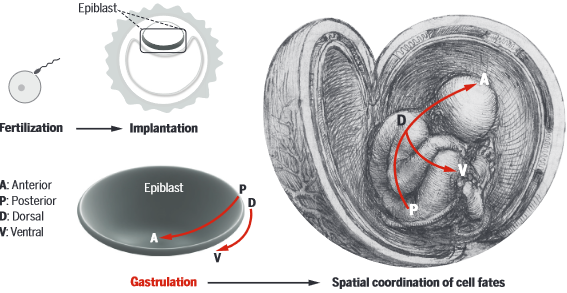- HOME
- News & Events
- Books / review / comments
- 【Books/review/comments】The primitive streak and cellular principles of building an amniote body thro...
Books / review / comments
【Books/review/comments】The primitive streak and cellular principles of building an amniote body through gastrulation
December 7 2021
Lab: Guojun Sheng
Paper information
Guojun Sheng, Alfonso Martinez Arias and Ann Sutherland
Title:
The primitive streak and cellular principles of building an amniote body through gastrulation
Science Vol 374, Issue 6572
doi:10.1126/science.abg1727
URL: https://www.science.org/doi/10.1126/science.abg1727
Abstract:
The primitive streak, a transient embryonic structure, marks bilateral symmetry in mammalian and avian embryos and helps confer anterior-posterior and dorsal-ventral spatial information to early differentiating cells during gastrulation. Its recapitulation in vitro may facilitate derivation of tissues and organs with in vivo-like complexity. Proper understanding of the primitive streak and what it entails in human development is key to achieving such research objectives. Here we provide an overview of the primitive streak and conclude that this structure is neither conserved nor necessary for gastrulation or early lineage diversification. We offer a model in which the primitive streak is viewed as part of a morphologically diverse yet molecularly conserved process of spatial coordinate acquisition. We predict that recapitulation of the primitive streak is dispensable for development in vitro.
After fertilization, a human embryo implants into the uterus (day 6-12) and gastrulation starts soon afterwards, with the primitive streak emerging at about day 14. Gastrulation allocates cell fates and spatial coordinates to epiblast cells, laying down the foundation of the human body.
Credit for the "Fetus in the womb" sketch by Leonardo Da Vinci: Royal Collection Trust / © Her Majesty Queen Elizabeth II 2021. Permission for commercial use of the "Fetus in the womb" sketch by Leonardo Da Vinci must be obtained from the Royal Collection Trust. Any non-commercial use must include the credit line.
(https://www.rct.uk/collection/919102/the-fetus-in-the-womb-sketches-and-notes-on-reproduction)

